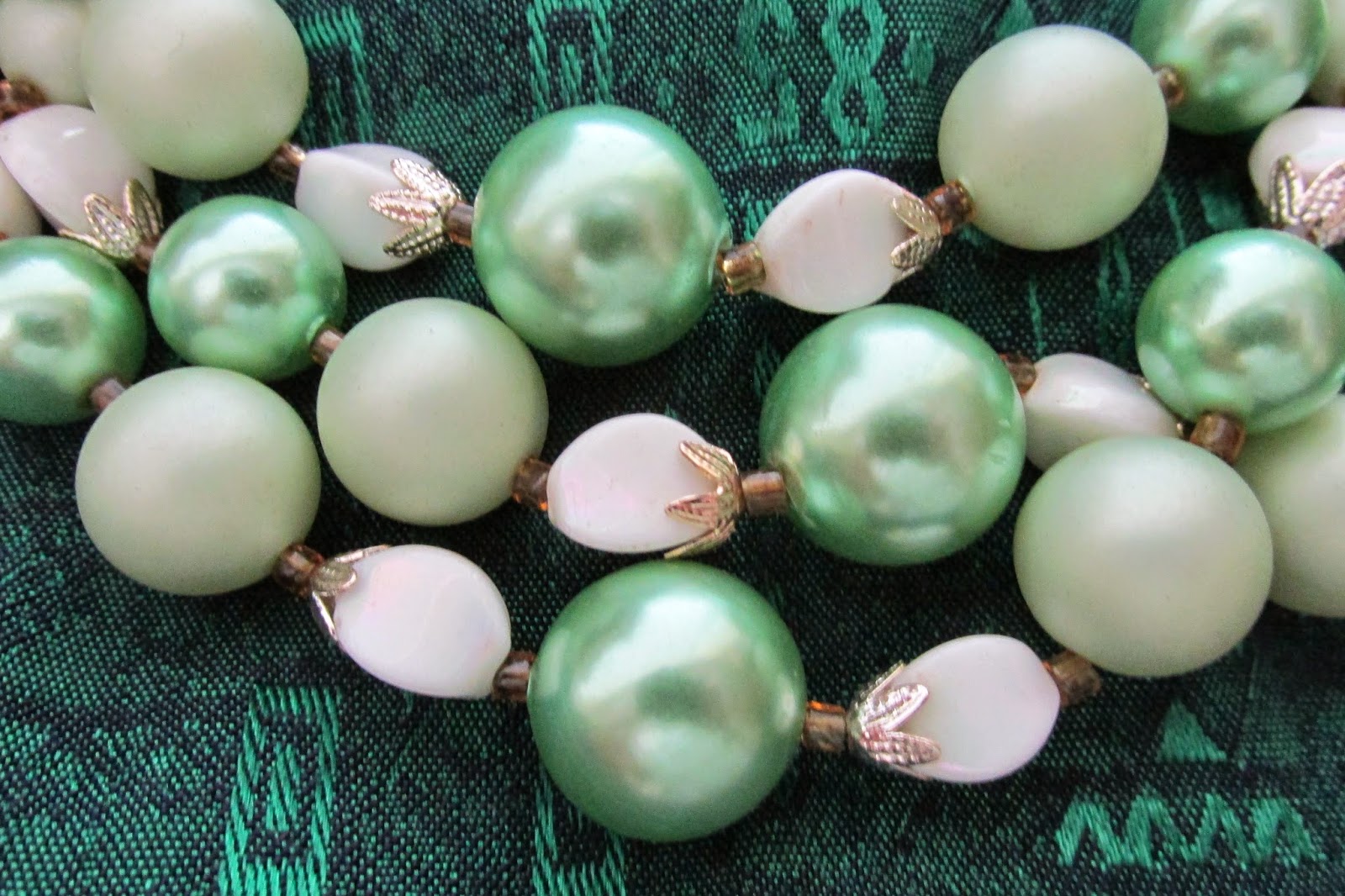__________________________________________
 |
| Hagen-Renaker miniature Rearing Horse, 3.5 inches tall, designed by Maureen Love, produced in 1958. |
http://www.latimes.com/business/la-fi-made-in-california-ceramics-20140430,0,5981103.story#axzz30NkcSR1K
I've been collecting Hagen-Renakers (mostly horses) since I was a teenager, and yes, I still have the first one I ever bought (although most of the other H-Rs I've owned have either been sold, traded to other collectors, or were lost in a major earthquake). Since the H-R company has been in business for 69 years, it's not uncommon for me to find their little animal figurines at estate sales.
I've found several Hagen-Renaker animals at estate sales in recent months -- mostly horses, but also some dogs and other little breakable animals.
 |
| Assorted Hagen-Renaker miniature horses, found at one estate sale. These dates to the 1950s and early 1960s. All were designed by Maureen Love. |
 |
| Hagen-Renaker "Queenie" Cocker Spaniel and "Dot" puppy, found at an estate sale. Mama is 4.75 inches tall and was made in 1954. Designed by Helen Perrin Farnlund. |
Speaking of "price guides" and estate sales: I like books about collectibles. It's helpful to know what a certain company's items looked like, how old they are, and which ones are more common or more scarce. But price guides are not always reliable sources when it comes to putting a price tag on a collectible at an estate sale.
It's important to consider that, at some level, any collectible item is only "worth" as much as you, or someone else, is willing to pay for it at the time in a particular venue (estate sale, yard sale, online auction or collector-to-collector). And what someone is willing to pay, may depend on whether they want it for their personal collection, want to give as a gift, or are just buying it to try to resell it at a profit.
I just checked and there are close to 5,000 items listed under "Hagen-Renaker" on eBay today. So if you want to sell one, you may have competition. Here's my suggestion for sellers: If you know exactly what item you have to sell, and you've checked its condition, don't just go by the price guide value. Search for SOLD (not ongoing) auctions on eBay for that same item, and refine your search to "lowest price + shipping." Then scroll down to see what people are actually paying for the item you have. That will give you an idea of the low end of the price range you might anticipate for reselling it. And remember, P.T. Barnum was not always right -- not every collector is a sucker.
The prices on Hagen-Renaker animals go up and down over time, depending on their rarity, condition, condition, condition, and which potential buyers a) came across the item for sale and b) just got a tax refund they're dying to spend on their hobby. In the case of online auctions, I've seen Hagen-Renaker prices go through the roof on a particular piece, probably because at least two people "had" to have that item for their collection. And I've seen other pieces sell for considerably less than I thought they should have, for whatever reason.
Hagen-Renaker's designs have been copied (legally and otherwise) over the years, and some of the copies are pretty good. For example, the nicest Lefton (Japan) copies of Hagen-Renaker horses are collectible in their own right. Being able to tell a vintage Hagen-Renaker animal from another brand of small ceramic animals is not just a matter of looking in a "price guide" book; it takes a bit of study and experience to know which ones are H-Rs and which ones aren't.
To help you do some research, Ed and Sheri Alcorn have a virtual Hagen-Renaker museum online:
http://hagenrenakermuseum.com/
And here's the link to the company's website:
http://www.hagenrenaker.com/Newpages/index.php
We'll talk some more about Hagen-Renakers in the near future. One of my favorite estate sale experiences involves a Hagen-Renaker horse, and a very gracious woman I met at one particular sale.





















































.JPG)

